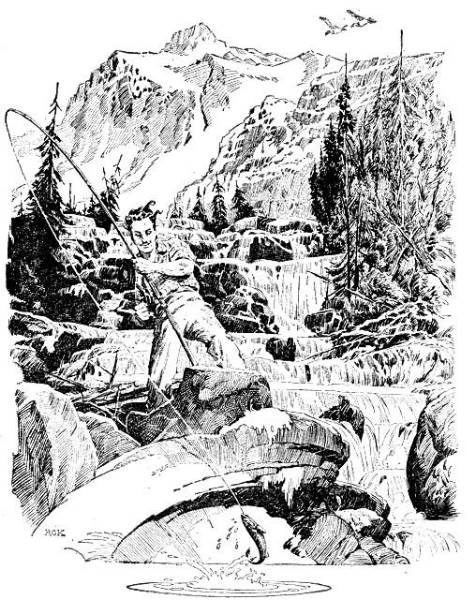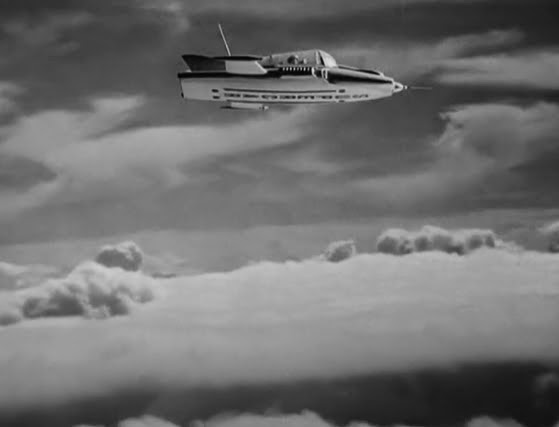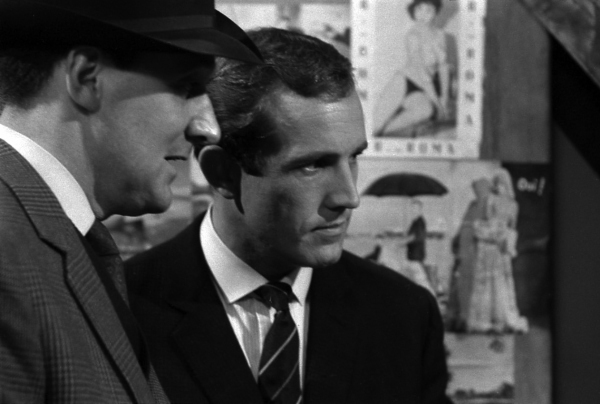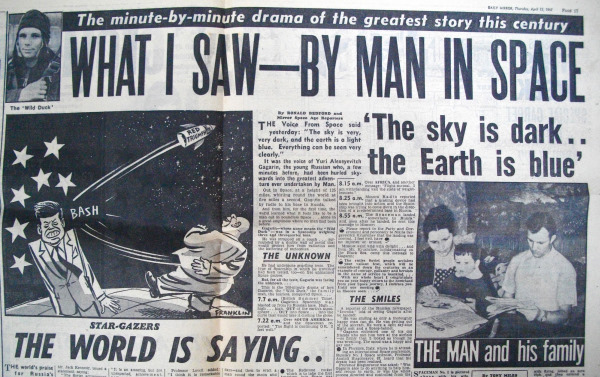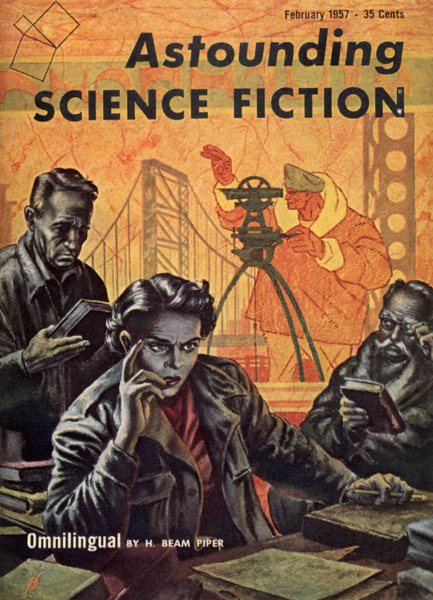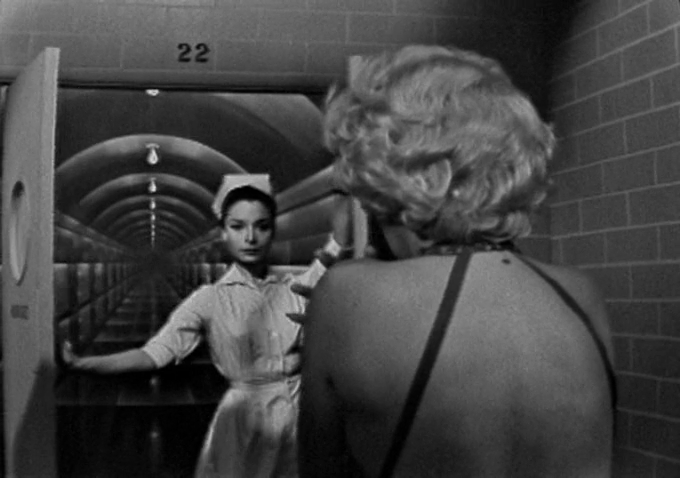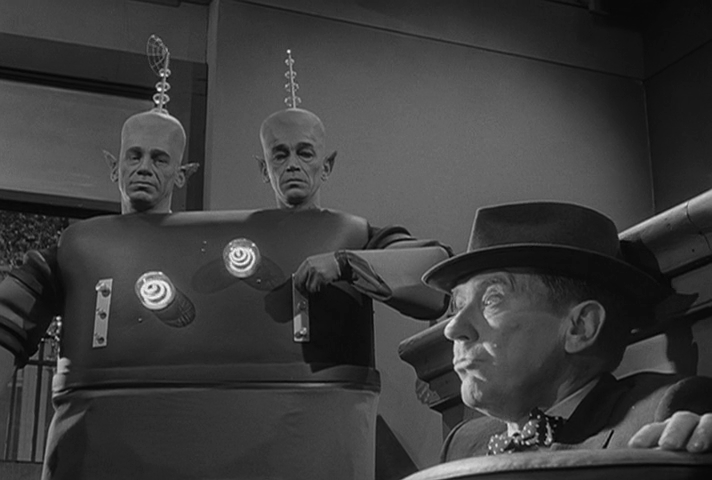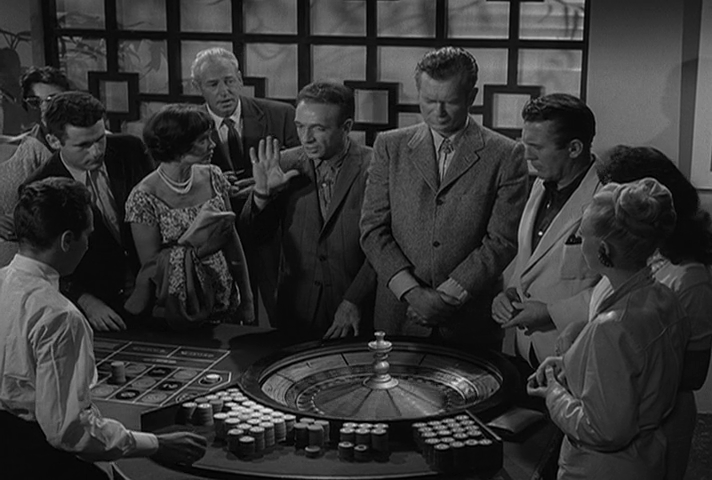[Here is Rosemary Benton's article for April 1961. She asked if she could do Zenna Henderson's compilation of The People stories, none of which she had previously read; I hadn't picked up the book since I have the stories in magazine form. I thought it a smashing idea since it would give us all a fresh insight on Henderson's works. I've been vindicated…(the Editor)]

In my quest to break my bookshelf under the weight of my science fiction, horror and fantasy collections, this month I picked up noted author Zenna Henderson's latest publication. To anyone who frequents Fantasy and Science Fiction and Galaxy, Zenna Henderson and her alien race, the People, should not be unknown to you. Pilgrimage: the Book of the People contains Ararat (1952), Gilead (1954), Pottage (1955), Wilderness (1956), Captivity (1958) and Jordan (1959), all tied together through an overarching narrative that tells the story of a human observing the People. As each one of the People takes their turn recounting their time on Earth, the book progresses along such themes as self-discovery, selflessness for the betterment of community, and the definition of home and belonging.

Pilgrimage: The Book of the People is, by authorial intent, the application of the accumulation of her personal experiences. Zenna Henderson clearly puts everything of herself into her stories, making her writing highly personal yet relatable. Her years in Arizona, first as a student at Arizona State and then as a teacher, crystalized the American West as the perfect setting for her stories of the People. In each of the chapters of Pilgrimage, the reader can detect hints of Henderson's spirituality, her compassion for humanity, and her willingness to believe in positive change effected by mindset and actions.
Born to Mormon parents but non-practicing beyond her marriage to Richard Harry Henderson in 1944, Zenna Henderson retains a deep sense of spirituality which she expresses in Methodism and in her writing. The People are a universalist group who believe that distance is without consequence when it comes to their relationship with the all knowing all being creator they call "the Presence." They are unafraid to acknowledge their religion and meet all other religions with respect. As Valancy, one of the People, says to the human Dita, “Two worlds and yet you're so like us” (162). Through words and non-violence the People manage to solve all of their dilemmas. It can read as a little saccharine, but Henderson's cleverness in creating solutions through diplomacy adds a refreshing taste to her stories.
Either out of moral obligation or because they are simply decent people, Zenna Henderson's main cast holds a special understanding for the mentally ill. I found this to be highly interesting to observe as you don't see much science fiction that treats the mentally ill as multifaceted characters. In fact, the majority of the overarching narrative in Pilgrimage is told from the perspective of a suicidal woman, Lea, who is receiving counseling from Karen, one of the People. Her journey of stepping away from the edge is just one of the many reasons to pay attention to Henderson's approach to mental health. Of particular note is the minor character, Lucine, in “Wilderness”. Henderson takes the time to build her as a disabled little girl who is prone to fits of rage but still remorseful for her violence. This makes her eventual mental break and the manhunt that follows particularly painful. We can see that her death would not be befitting of her crimes, and the reader can't help but sympathize with such a debilitating illness as severe mental retardation.
But mental anguish and flawed characters are not all that Zenna Henderson brings to tangible life within the genre of science fiction. Henderson is in a unique place to write on immigration, and she delves into the complications of it with full gusto. I understand that she taught at the Japanese interment camps in Sacaton, AZ; Henderson was able to see first hand the forced displacement of people from their homes. Her experience at a US Air Force dependents' school in France likewise taught her more about people exiled from their places of origin. Science fiction is replete with adventurers flung far away from their homes, but in few cases do we see frontier life complete with details of longing for a home that can never be returned to; one that the characters are tragically adrift from forever. In describing the People's collective memory of the voyage from their world, the human Melodye succinctly observes that, “Racial memory was truly a double-sided coin” (99). Henderson likewise writes about the loss of culture and recorded memory (33). The fear in the flight from one's home is made very clear on page 182 when Henderson writes, “From terror and from panic places. From hunger and from hiding – to live midway through madness and the dream”.
In addition to her use of the world as she saw it, nowhere else in Henderson's writing do you see her own personal experience shine more brightly than in her portrayal of teaching and teachers. There is a fascinating realism and maturity that Henderson infuses her younger characters with. These are three dimensional children who are a product of their environments and whose stories reflect that. They express rage, harbor ambitions, and are powerful but still young. Most importantly they want to heard and be listened to. The story of the Francher Kid, a foster child in an unfortunate household, is a prime example of Henderson's ability to write a compelling child character who is a conflicted, lonely and trapped. I believe Henderson's description of Francher as a “My Child” best speaks to the author's authority on the topic of merging experience with fiction, “We teacher-types sometimes find [a My Child]. They aren't our pets; often they aren't even in our classes. But they are the children who move unasked into our hearts and make claims upon them over and above the call of duty” (178). Her explanation of how teachers relate to their charges rings true on page 17 as well, “They pour out the most personal things quite unsolicited to almost any adult who will listen – and who's more apt to listen than a teacher?”. Teachers in Henderson's writing seem to represent the closest equivalent Humans can get to the glowing moral fiber of the People. They are portrayed as saviors, love interests, authority figures, and even heroes.
Perhaps the most noticeable fault in Henderson's writing is the air of assurance that everything will turn out alright due to the moral uprightness of the People; their steadfast adherence to doing what is right erases any deep senses of urgency in the plot. The effect is that Henderson's writing is a slow, contemplative walk rather than a sprinting, adrenaline race to the finish.
On the other side, a slow burning plot gives the author time for investment in the characters. And even with their moral fortitude, the main characters are not boring guides. They experience a full range of situations that test her message of acceptance and tolerance, and although the reader can rest assured that things will work out, how they work out is entertaining to read, and often a touch bittersweet.
In sum, I highly recommend Pilgrimage: The Book of the People — of all the speculative fiction books you could read this year (1961), it may turn out to be the best.



